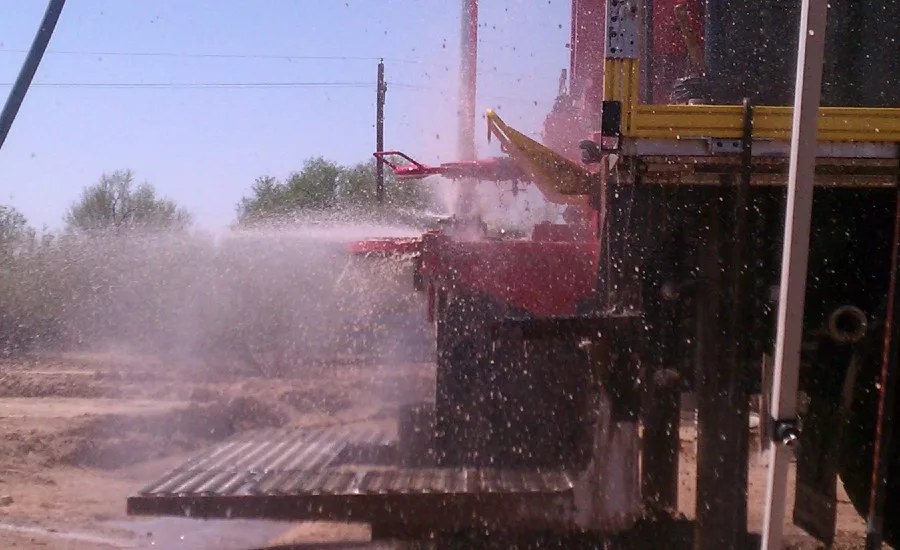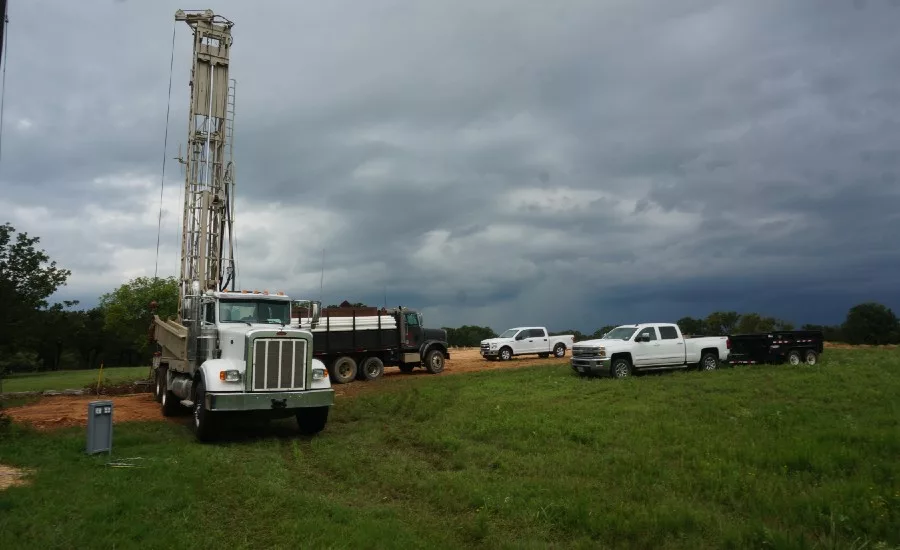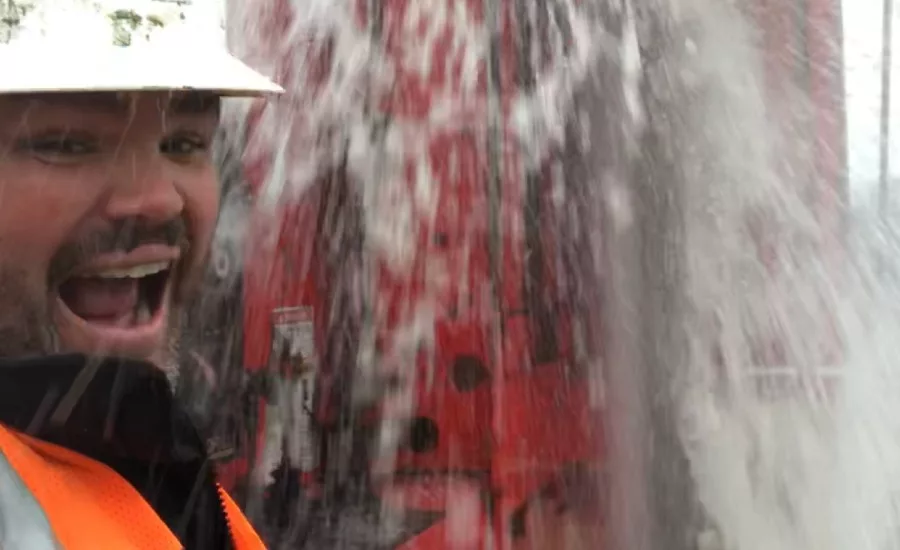How Can Drillers Improve Well Design Skills?
‘Tribal’ Drilling, Engineering, Science Disciplines Benefit Each Other

Drilling contractors don’t sell the component parts of a well. They sell a means to extract water or other resources, and input from engineers and scientists can help toward that goal.
Source: Brock Yordy

Drillers can learn a lot of “tribal” knowledge before ever opening a book about hydrology, engineering or other disciplines that can improve a company’s well design.
Source: Brock Yordy

Does the well you installed flow to project specs? Congratulations. Can learning all you can about the science and engineering behind those specs help your company down the line? Absolutely.
Source: Brock Yordy
The drilling industry is built on lessons learned in the field. These lessons give great drillers the tribal ability to identify 5 feet of a screenable sand formation. Next, using that same tribal ability, they can hold an ounce of that formation in their hand and identify it as seven-slot screen. These lessons grow from experience, remembering that the last time drilling in this area and installing a 10 slot, the well pumped sand for an extra day during development.
We apply our tribal knowledge every day while discovering the unknown and extracting resources. But how can we apply our tribal knowledge with 21st-century expectations?
The definition of “water well design” expands from shallow sand and gravel drift wells to several-thousand-foot aquifer storage and recovery (ASR) wells in fractured rock, and beyond. As a young driller in southwest Michigan drilling shallow sand and gravel wells, my family’s design method consisted of internal well logs, customer requirements, the quote and Michigan’s water well regulations. Reflecting on this design approach, I now consider it as a “tribal” design process.
I found similar tribal design as travels took me farther away from the Great Lakes. Many companies utilized this approach, yielding successful well completions. Keeping well design a tribal process is easy when all decisions are made within the tribe (company) and with the customer. This tribal design process, however, has an opportunity to unravel when it meets engineered specifications. It is up to the drilling company to advocate for and articulate their tribal knowledge with the same intent as the written specifications.
Tribal Knowledge as a Component of Well Design
As a drilling company evaluating the project scope, the amount of water available is the first and most critical expectation of final completion. If we install the screen and casing and no water comes out, you have a wishing well, not a well. Remember, we do not sell drilling services, casing, screens or pumps. We sell a means to extract and provide water. Therefore, yield and capacity are critical elements to completion.
This is where tribal drilling knowledge becomes crucial in the design process. Before we can extract water, we have to start with the tribal knowledge of borehole creation. Our experience allows us to provide the answers to the following questions. How do we create a borehole that:
- Is open?
- Is stable?
- Is straight?
- Is gauge?
- Is clean?
- Allows for easy product installation?
- Enables efficient resource extraction?
We turn our tribal knowledge into science when we contribute our tribal design process to the engineered expectations. The next step is to substantiate our company’s knowledge by advocating for your company’s best drilling method for that project. Serve as the expert in the room, capable of pulling from prior project experience at any time.
Remember, we do not sell drilling services, casing, screens or pumps. We sell a means to extract and provide water.
I find that building a drilling program for every project prepares me to answer any questions. This drill program is an extension of our tribal well design, incorporating local regulations, the customer’s quote and well logs. Beyond the tribal design, I add rig capabilities, rig limitations, concerns about complicated geologies, and estimates of cubic feet of borehole material removed. Once I gather all of this information, I can prove why my tribal design decisions are necessary for minimal impact to the production zone and successful completion.
Preventing the Unraveling
Did you know in the 1930s, the French entomologist August Magnan observed that it should be physically impossible for bumblebees to fly? Right around that same time, George E. Failing was starting to produce the first portable drilling rig. For decades, drillers utilizing mobile drilling rigs have created producing water wells where others believed water unobtainable. At that same time, other drillers have applied impractical drilling methods for a given formation, defied fundamentals and also created producing water wells. What do drillers and bumblebees have in common? Is it that they can both sting when agitated? No. They never believed in the impossibility of a task they do every day.
Remember that every success in tribalism came from many achievements and failures. Unraveling between applied tribalism and engineering comes from both parties forgetting where the other came from. Drillers often say, “You can’t learn that from a book.” The science community involved in drilling usually started by learning from the book and applying it to the design. Science is all about using what is understood to create consistent results. I don’t know in how many languages I’ve heard, “That guy Yordy doesn’t have a masters degree. He doesn’t know what’s best for the design.” But a driller’s understanding, and consistent results, stem from tactile feedback from the equipment and experience drilling a variety of conditions. Scientists, engineers and other project designers will benefit by considering the driller's input.
The irony? In this case, the “book” and “practical” field manuals both came from documented successes and failures. Drillers can feel like they have a different understanding based on in-the-field tribal knowledge and its successes and failures. Scientists may feel they have the optimal design for the formation, until it comes time to build it on site. It may sound hokey, but to keep these two strands from unraveling, the driller has to become the book and the scientist has to become part of the tribe. Along the way, it helps if egos get put in check. The best results come when drillers and scientists collaborate and learn from each other.
Progressing into the 21st Century
The final piece to success is both drillers and scientists continuing to seek the best methods and technology. Seventy-five years after Magnan said bumblebees couldn’t fly, another scientist, Michael Dickinson, utilizing high-speed photography, determined Magnan’s interpretation from the 1930s was wrong. Magnan believed that the bumblebee flapped its wings up and down. However, with 21st-century technology, Dickinson showed bumblebee wings flap in a circle. I equate this to once using hand measurements for drawdown and recovery, versus now using transducer data. It is hard to trust technology over human perception.
Drilling tribal knowledge and engineering handbooks have one major thing in common: They are both slow to adopt industry advancements. Drillers, look at a picture of that first Failing portable drill rig and then look in the shop at your current rig. If the equipment looks very similar, you have the best preventive maintenance team in the industry. If not, welcome to the 21st century. Scientist, we know that book on your shelf was the most incredible resource ever written — in 1965. However, today that information can be substantiated or refuted in five minutes with an internet search. A good friend and mentor, Dr. Thomas Herbert, said it best: “Brock, when I was in college, my professors graduated in the 1930s teaching me as a student in the 1960s. I had a structural professor come back from a GSA meeting in 1964 who threw out his whole lesson to teach plate tectonics.” What we know today can 100% be different tomorrow.
Drillers, gather as much information from scientists as you can while designing and drilling a well. Combine that with the 1,000s of hours of tribal field knowledge you have to create the best results for your drilling company. The scientist that unlocks the drillers’ tribal knowledge handbook will always complete successful projects for their firms. However, when we both learn how to share that knowledge — in well design, on well logs, completion logs and case histories, we start to promote and adopt a shared tribalism as a critical component of well design for the groundwater industry.
Looking for a reprint of this article?
From high-res PDFs to custom plaques, order your copy today!







